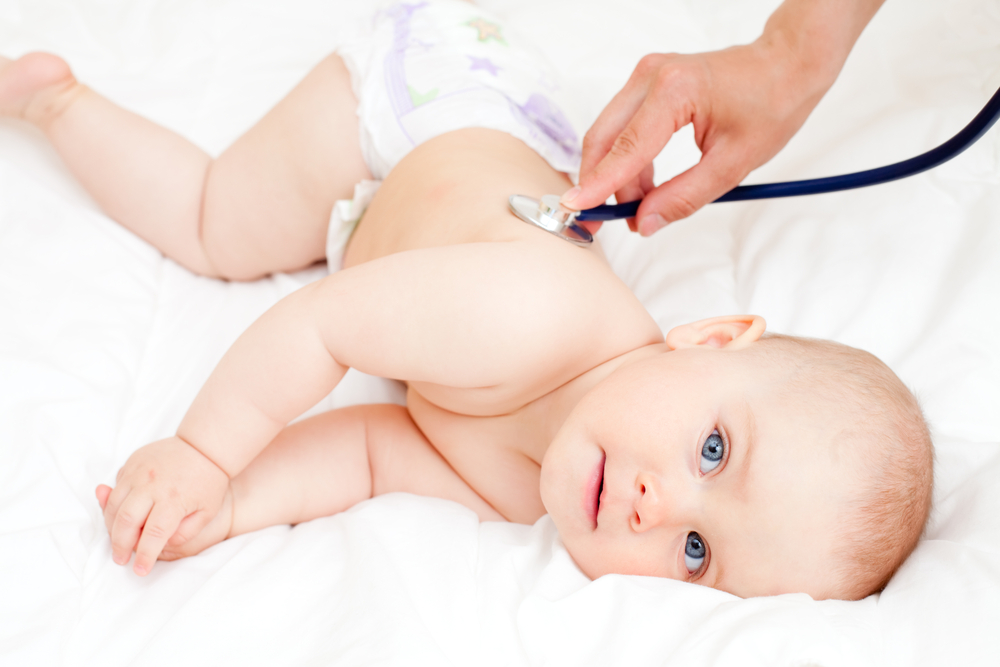


The respiratory rate is a measurement of the frequency of breaths an individual inhales in a set time period (usually sixty seconds). The normal respiratory rate for infants is higher than it is for adults for numerous reasons which will be detailed below. It is important to note that when speaking of respiratory rate, it is known as many different names and terms, such as respiration rate, respiration frequency, ventilation rate, pulmonary ventilation rate, ventilation frequency, or breathing rate.
It is important to know the normal respiratory rate for infants if you have a young child, as fluctuation from what is normal may be a sign of a health implication which may need attention. Below is what is considered normal:
As your baby grows up, the normal respiratory rate will change gradually.
As for adults, the normal range should be around 12-20 breaths per sixty seconds.
 At the very beginning, the lungs and thorax are nearly the same size. But the rib cage grows more quickly than the lungs, so there is reserve in the adults where newborns don't have. Adults have fully developed respiratory systems, where the lungs have stretched to their final position within the relaxed rib cage. While in infants, the lungs fill the thorax and are not fully stretched, which make infants must breathe more, like two to three times faster than adults, to achieve satisfactory respiratory input.
At the very beginning, the lungs and thorax are nearly the same size. But the rib cage grows more quickly than the lungs, so there is reserve in the adults where newborns don't have. Adults have fully developed respiratory systems, where the lungs have stretched to their final position within the relaxed rib cage. While in infants, the lungs fill the thorax and are not fully stretched, which make infants must breathe more, like two to three times faster than adults, to achieve satisfactory respiratory input.
There is no need to worry if your baby’s breathing is normal, when compared to thenormal respiratory rate for infants noted above. If your baby’s breathing is abnormal, such as being sixty breaths per minute without crying, then it could be an indication of underlying breathing problems, meaning you should call your doctor immediately as it will most likely require medical attention. Breathing problems related to infants include:
During birth, the amniotic fluid within a baby’s lungs is squeezed out as it passes through the birth canal. If the amniotic fluid remains after birth, it is known as Transient Tachypnea. The chances of this may be increased by caesarean births, a fast delivery, lack of crying after birth, or if the baby is born to a mother who has asthma or diabetes. This condition is present in around 1% of new-borns, and will often be resolved after a few days of treatment without permanent effect on the baby’s health or prosperity.
Whilst in the uterus, the lungs of the fetus are made up by a collaboration of small air sacs that work to exchange oxygen with the bloodstream. To prevent these sacs from becoming closed and incapable of oxygen transferal, a substance known as surfactant lubricates the area. Respiratory distress syndrome occurs when not enough of this substance is produced, leading to a difficulty in oxygenation of the blood. This condition is most common in baby who is born prematurely (as the lungs develop late into the pregnancy), and can lead to fluctuation in the normal breathing rate for infants.
Many infections may occur in a baby after birth due to exposure to bacteria either during or after delivery. If the baby is exposed to group B streptococcus bacteria and obtains an infection, then it may lead to breathing difficulties and an increased rate of breathing, as well as less energy to perform bodily function, due to energy being harnessed to fight the infection.
Other conditions can affect and infant’s breathing, including pneumonia, congenital lung malformations, etc. If you notice that your infant is breathing too fast, you should seek medical help as soon as you can, to treat and resolve the underlying problem.